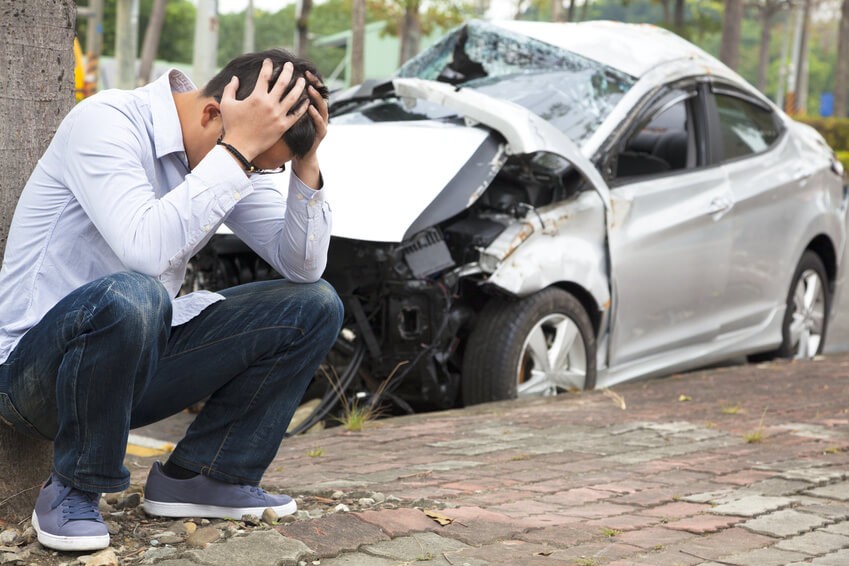 Despite a number of efforts to reduce fatal crashes and other car accidents on Colorado’s interstates and highways, statistics show there was a spike in fatal wrecks in the state during 2015. In response to the staggering statistics — the most traffic fatalities in the state since 2008 — officials are launching new initiatives and refocusing other efforts in an attempt to make Colorado roads safer.
Despite a number of efforts to reduce fatal crashes and other car accidents on Colorado’s interstates and highways, statistics show there was a spike in fatal wrecks in the state during 2015. In response to the staggering statistics — the most traffic fatalities in the state since 2008 — officials are launching new initiatives and refocusing other efforts in an attempt to make Colorado roads safer.
Fatalities in Colorado Car Accidents
According to the Colorado Fatality Analysis Reporting System, 547 people (i.e., drivers, passengers, pedestrians, motorcyclists, and cyclists) died in car crashes in the state during 2015.
This figure represents an 11 percent increase over the 488 who died on Colorado roads during 2014. Before last year, the last time the death toll on the state’s interstates and highways topped 500 was during 2008.
Fatalities in Colorado Motorcycle Crashes
In addition to the overall increase in traffic fatalities, almost 12 percent more motorcycle riders died in Colorado during 2015 than during the previous year. In all, 105 motorcycle drivers or passengers died in the state last year, compared to 94 during 2014.
This increase could indicate that there were simply more bikes on the road in 2015, but the Colorado Department of Transportation urges motorcyclists to follow some basic safety rules to lower their risk of an accident. This includes:
- Always wearing a helmet
- Never driving after drinking or using drugs
- Always paying careful attention to motorists around you
- Never riding in weather conditions you are not confident in
The Reasons Behind The Increase
While the statistics are scary, many of these fatalities occurred simply because there were more cars on the road. With lower fuel prices and a rebounding economy, people can afford to travel again. More people traveling means more cars on the road, so the overall number of crashes and the number of fatal crashes both rise.
At the same time, the unemployment rate dropped to around four percent in Colorado last year, down from a high of almost nine percent in 2010, according to the Bureau of Labor Statistics. More people with jobs means more commuters, and a busier rush hour.
Increasing Their Own Risk
Perhaps the most frightening statistic of all is that more than a third of all people killed in Colorado car accidents in 2015 were not wearing a seat belt. Under Colorado law, all front seat occupants and anyone under the age of 16 must buckle up. However, the evidence is clear that this is not occurring.
In fact, a recent Colorado Department of Transportation survey found that about 15 percent of all adults who participated admitted they rarely, if ever, use seat belts. According to the National Highway Traffic Safety Administration, seat belt use alone could have prevented 60 deaths last year.
Unlike Colorado, many states have a primary seat belt law in place. This means law enforcement can stop motorists for the offense. Colorado officials, however, are weighing the possibility. While this type of law is rarely popular among residents, it is very effective at reducing the number of fatalities.
Other factors that contribute to a larger number of Colorado’s fatal car crashes include drunk driving and distracted driving. Drunk or impaired driving played a role in 32 percent of traffic deaths in the state last year, meaning almost one out of every three people who died on Colorado roads in 2015 was either impaired or hit by a drunk driver.
The Colorado Department of Transportation already funds a number of alcohol and drunk driving initiatives through dozens of grants to local governments, nonprofits and other organizations. However, it appears more work may be necessary to crack down on those who continue to drink or use drugs before driving.
If you pay attention to other drivers when you are on the road, it will come as no surprise to you that Colorado’s — and the nation’s — problem with distracted driving is widespread.
Part of the problem is that it is almost impossible to determine how many distracted drivers caused crashes in 2015, because most drivers are not forthcoming with this information. Still, it does not take extensive research to know that it is a substantial number.
Future Trends in Road Safety
Despite the spike in road fatalities in 2015, the general trend for car accidents in the state is going down. This is certainly true when you compare the number of deaths per mile driven. In 2002, 743 people lost their lives on Colorado roads, which helps put the 2015 total of 547 in perspective.
For Help After a Colorado Accident
If you or a loved one suffered injuries in a Colorado car accident, the Law Offices of Dianne Sawaya, LLC can help you get the compensation you deserve to cover your medical bills, lost wages, funeral expenses, pain and suffering and more. We offer smart, aggressive and compassionate representation in Denver. Call us today at 303-758-4777 to schedule a free initial consultation.

